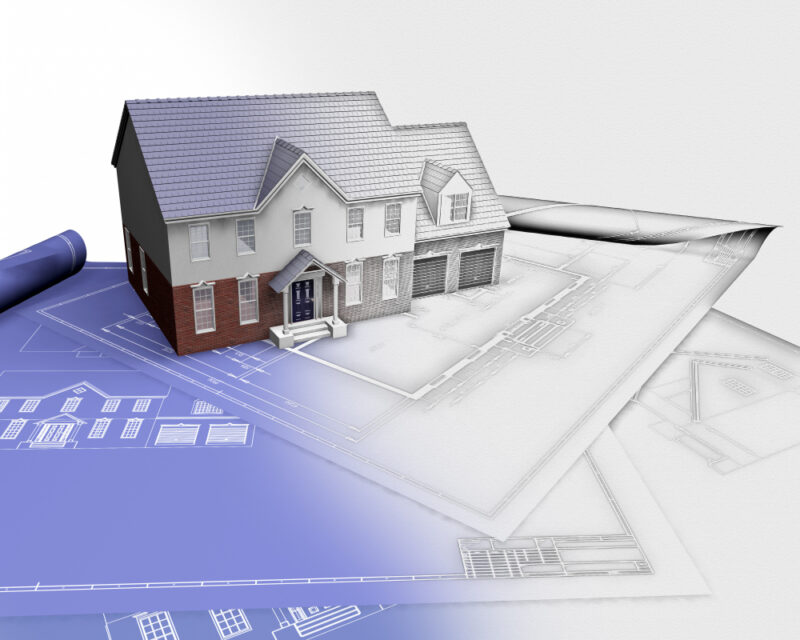In the world of architecture and building design, sustainability has become a buzzword. With increasing concerns over climate change and environmental degradation, it’s essential to adopt sustainable practices in all aspects of our lives – including the buildings we live and work in. Sustainable building design is about creating structures that are environmentally responsible, resource-efficient, and economically viable. In this blog post, we’ll explore why sustainable building design is so crucial today and how using sustainable materials can help reduce our impact on the planet. So let’s dive into this topic!
What is sustainable building design?
Sustainable building design is an approach to architecture that prioritizes environmental responsibility, resource efficiency, and economic viability. This means that residential and commercial builders aim to minimize negative impacts on the environment while creating healthy, comfortable living spaces for people. One of the key principles of sustainable building design is reducing energy consumption by utilizing passive solar design techniques and selecting high-performance insulation materials. Buildings should also be designed with water conservation in mind by incorporating features such as low-flow fixtures and rainwater harvesting systems.
Another aspect of sustainable building design is focusing on materials that are renewable, recyclable, or have a low carbon footprint. This can include using sustainably harvested wood products or recycled steel instead of traditional materials like concrete which contribute significantly to greenhouse gas emissions during production.
Furthermore, sustainable building designs prioritize indoor air quality through the use of non-toxic finishes and improved ventilation systems. Additionally, designing buildings that are adaptable over time can reduce waste associated with demolition and reconstruction.
Sustainable building design seeks to create structures that positively impact both people and the planet by balancing social equity needs with environmental responsibilities in cost-effective ways.
Why is sustainable building design important?
Sustainable building design is becoming increasingly important in modern times due to its positive impact on the environment. By using renewable resources and minimizing waste, sustainable building designs reduce greenhouse gas emissions and minimize the depletion of natural resources.
Apart from being eco-friendly, sustainable buildings also offer various economic benefits. The use of energy-efficient materials leads to lower utility costs for homeowners or businesses, making it a financially sound choice in the long term.
Moreover, sustainable materials are often more durable than traditional construction materials. They can withstand harsh weather conditions and require less maintenance over their lifetime.
Sustainable building design also promotes health and well-being among occupants. The use of non-toxic materials eliminates exposure to harmful chemicals that can cause respiratory problems or other health issues.
As society becomes more environmentally conscious, so does the demand for sustainable buildings increase. Governments worldwide have started implementing regulations encouraging developers to adopt sustainable practices while constructing new buildings or renovating existing ones.
Adopting sustainable building design practices is vital today as they provide numerous ecological advantages alongside financial stability, and occupant well-being through healthy air quality while benefiting future generations by preserving our planet’s natural resources for years to come.
What are some sustainable materials that can be used in building design?
When it comes to sustainable building design, using eco-friendly materials is crucial. There are numerous options available that can help reduce the environmental impact of construction projects.
One such material is bamboo, which has become increasingly popular due to its durability and renewability. Bamboo grows faster than most trees, making it a more sustainable choice for flooring, furniture, and even structural elements like beams.
Another option is recycled steel. This material helps reduce waste by reusing existing metal instead of extracting new resources from the earth. Recycled steel can be used in framing and other structural elements of buildings.
Using reclaimed wood also offers a sustainable alternative to traditional lumber. By repurposing old wood from sources like barns or factories, fewer trees need to be cut down for new construction projects.
In addition to these materials, there are many others that can contribute to sustainable building practices including cork insulation made from renewable bark or natural stone tiles sourced locally rather than shipping them across long distances.
By incorporating these materials into modern building design practices we can make significant strides towards reducing our carbon footprint while still creating beautiful and functional structures that will stand the test of time.
How can sustainable building design help reduce the impact of climate change?
Sustainable building design plays a crucial role in reducing the impact of climate change. By utilizing sustainable materials and construction techniques, buildings can significantly decrease their carbon footprint. One way this is achieved is by reducing energy consumption through efficient insulation and ventilation systems.
Moreover, sustainable buildings often incorporate renewable energy sources such as solar panels or wind turbines to generate power. These methods not only reduce greenhouse gas emissions but also save money on energy bills in the long run.
Another aspect of sustainable building design that helps mitigate climate change is water conservation. Buildings can collect rainwater for reuse in irrigation systems or greywater recycling systems for non-potable uses like flushing toilets or cleaning.
Furthermore, choosing eco-friendly materials with low embodied carbon content instead of traditional high-carbon emitting ones reduces the overall environmental impact of a building’s life cycle. Materials like bamboo, straw bales, recycled steel, and timber are great examples that have minimal negative environmental impacts while still being durable and aesthetically pleasing.
Designing and constructing sustainably creates positive effects on our environment by reducing waste generation while minimizing resource consumption to create healthier living spaces and a better future for all people living on earth.
To conclude, sustainable building design is crucial for our planet’s future as it helps reduce the negative impact on the environment. The use of sustainable materials in building design can significantly contribute to reducing greenhouse gas emissions and other harmful effects caused by construction. With advancements in technology and more emphasis placed on sustainability, architects, and designers have an increasing number of options when it comes to selecting environmentally-friendly materials.
By incorporating eco-friendly practices into modern building designs, we can create structures that are not only aesthetically pleasing but also complement their surroundings while being energy-efficient. It’s time we shift our focus towards implementing sustainable measures in every aspect of our lives so that we leave behind a better world for generations to come. Let’s work together towards creating a brighter future with conscious choices today!









